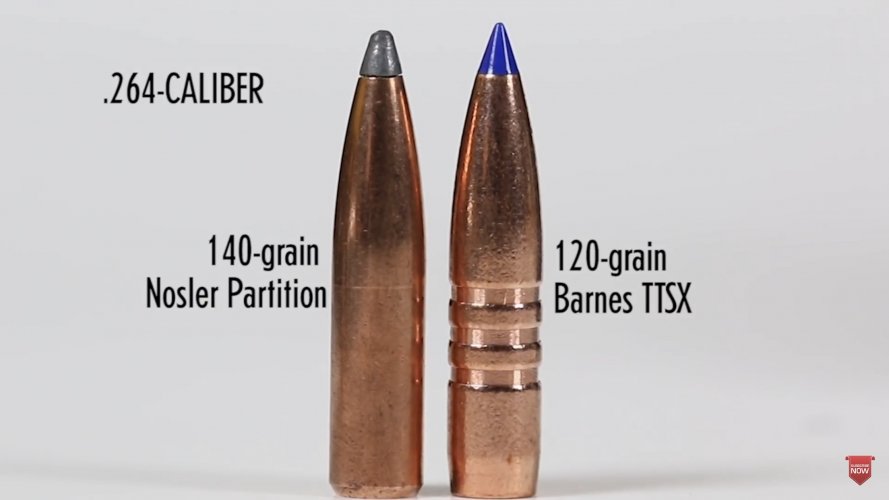EastTNHunter
Well-known member
- Joined
- Jun 13, 2018
- Messages
- 1,871
So I’m getting antsy for season to start, and I’m beginning to muse on things that aren’t very important but occupy corners of my mind that get stored at this time of year.
I’ve gotten into several conversations over the years dealing with cup and core vs premium bonded vs monolithic bullets. Many were rational and levelheaded, while others were… goofy. But I have tended to believe that the differences in on-game performance was a matter of degrees, ie use a 308 150gr mono vs a 165gr premium bullet vs a 180gr cup and core. But I guess the question with monos is how light should you really go before it becomes detrimental to on-game performance?
This question came from reading threads about people using monos (TTSX, Hammer, etc) at blistering speeds that maintain 100% weight retention and require high velocity to open reliably. If conventional 270win bullet weight is 130-150gr, then monos should be able to go to 110-130gr. Well, could I also go lighter than that on elk-sized game and actually get better performance due to higher speed? If they maintain 100% then they will also main good penetration. How about using 110gr 308 at higher speed on elk?
I guess to sum up the questions for the mono advocates: Is SD even relevant with monos? Would you use a 110gr 308 mono bullet at 3200fps, or a 110 270 mono at 3200fps on an elk? How about a 95gr mono at 3400fps?
Come on hunting season
I’ve gotten into several conversations over the years dealing with cup and core vs premium bonded vs monolithic bullets. Many were rational and levelheaded, while others were… goofy. But I have tended to believe that the differences in on-game performance was a matter of degrees, ie use a 308 150gr mono vs a 165gr premium bullet vs a 180gr cup and core. But I guess the question with monos is how light should you really go before it becomes detrimental to on-game performance?
This question came from reading threads about people using monos (TTSX, Hammer, etc) at blistering speeds that maintain 100% weight retention and require high velocity to open reliably. If conventional 270win bullet weight is 130-150gr, then monos should be able to go to 110-130gr. Well, could I also go lighter than that on elk-sized game and actually get better performance due to higher speed? If they maintain 100% then they will also main good penetration. How about using 110gr 308 at higher speed on elk?
I guess to sum up the questions for the mono advocates: Is SD even relevant with monos? Would you use a 110gr 308 mono bullet at 3200fps, or a 110 270 mono at 3200fps on an elk? How about a 95gr mono at 3400fps?
Come on hunting season





